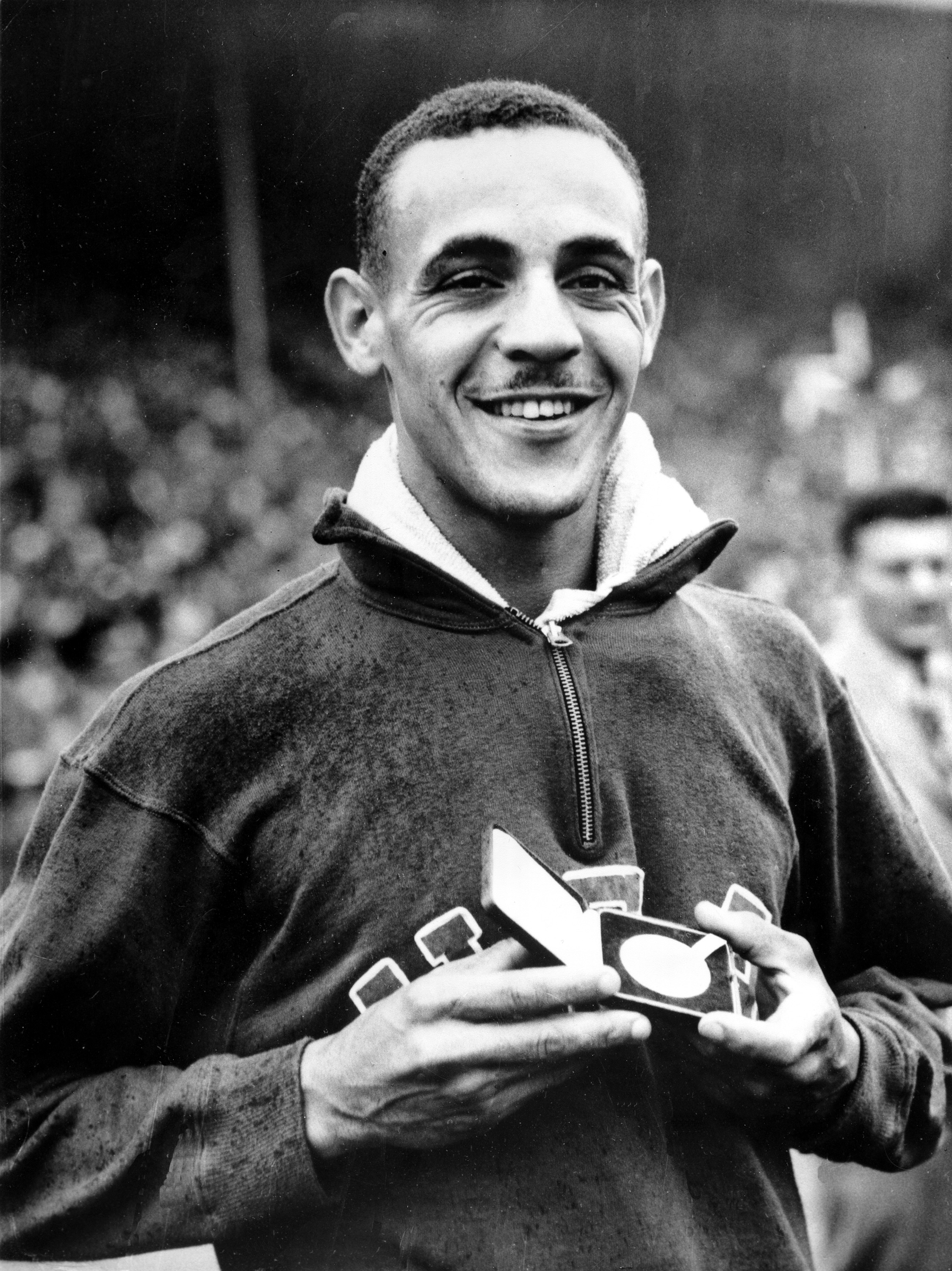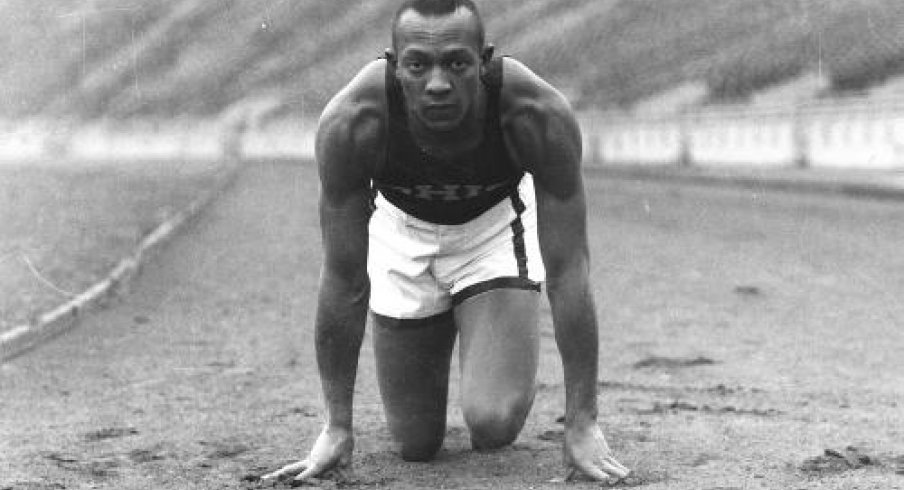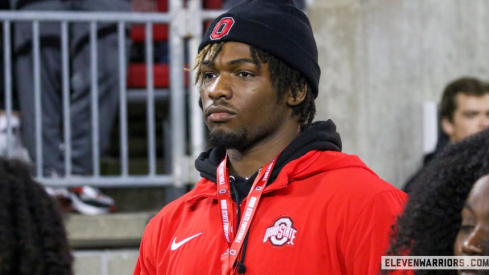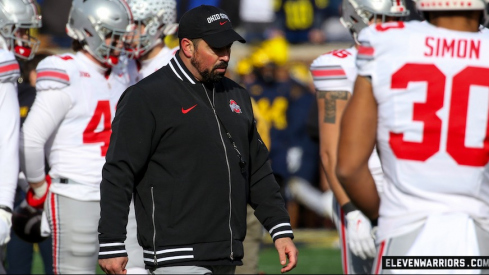The 2016 Rio Olympics are officially underway. While a number of current and former Buckeyes are looking to make their mark on the international stage, we take a look back at some legendary Olympic performances from Ohio State athletes in the past.
Jesse Owens (Track and Field)
Jesse Owens gave the world one of the greatest performances in Olympic history during the 1936 Berlin games, but before that he was a Buckeye.
The Buckeye Bullet, as he became known, won a record eight NCAA Titles at Ohio State – four in both 1935 and 1936. Owens' most memorable moment in the Scarlet and Gray came on May 25, 1935 in Ann Arbor Michigan when he set three world records in long-jump, 220 yard sprint and low hurdles while tying another in the 100 meter dash – and he did it all in under a 45 minute spa.
In 1936, Owens competed in the Berlin Olympic games where he dominated in the face of Adolf Hitler's Nazi propaganda promoting Aryan superiority. Owens won four gold medals at the games, earning first-place in long-jump, the 100 and 200 meter dashes, and the 400 meter relay.
It's impossible to incapsulate what Jesse Owens' Olympic performance meant to the world in just a few sentences – he truly is one of the greatest Olympians of all time.

Mal Whitfield (Track and Field)
With five Olympic medals to his name, Malvin Whitfield is the only Buckeye Olympian to top Jesse Owens' medal count – although he did it across two different Olympic games and not all of them were gold.
“He and Jesse Owens were probably the two smoothest runners that you could possibly want to see,” said Harrison Dillard, the Olympic 100-meter champion in 1948, to the Team USA website. “Of course, they ran different events — one was a sprinter, one was a middle-distance runner — but Mal, his stride was so long and graceful and effortless, I’ve never seen anything like it.”
Marvelous Mal, as he came to be known, joined the United States Army Air Forces in 1943 and was a member of the famous Tuskegee Airmen. After World War II, Whitfield enrolled at Ohio State, after being persuaded by his friend Jesse Owens. As a Buckeye, Whitfield won NCAA Titles in the 800 meter in 1948 and the half-mile in 1948 and 1949.
As an Olympian, Whitfield was equally dominant. He competed for the first time in 1948, taking home gold medals in the men's 800 meter and the 4x400 meter relay as well as a bronze medal in the men's 400 meter.
Whitfield again served in the armed forces in the Korean War, but returned home just in time to compete in the 1952 Olympics where he defended his gold medal in the men's 800 meter and took home a silver medal in the 4x400 meter relay.
Whitfield finished his Olympic career with five medals – three gold, one silver and one bronze. He spent the rest of his life as a sports ambassador in Africa, where he conducted sports clinics and coached in over 20 countries.
Paula Myers-Pope (Diving)
Paula Myers-Pope attended Ohio State for just one year (1955) while she trained for the Pan-American Games. This was because USC, where she first attended and later earned her degree, was on a semester schedule while Ohio State was on a quarters schedule. this allowed her to drop out and compete in the games during the winter quarter.
At Ohio State, Myers-Pop was a groundbreaker of sorts, becoming the first women to practice with the men's team. She trained alongside 1956 silver medalist Don Harper as well as internationally recognized divers Morley Shapiro, Miller Anderson and Al Patnak.
In her Olympic career, Myers-Pope earned four medals – three silver and one bronze. She took home a silver medal in platform in the 1952 Olympic games and Bronze in the same event in 1956. She also earned silver medals on the springboard as well as the platform in the 1960 games.

Paul Hamm (Gymnastics)
Paul Hamm owns three Olympic medals – two gold and one silver – and is the most recent Buckeye to win an gold medal in an individual competition.
In the 2004 Olympics, Hamm became the first American men's gymnast to win gold in the all-around competition, but those prospects looked bleak midway through the competition. Hamm was in first place before a colossal stumble on the vault dropped him to 12th.
“It almost seemed surreal,” he said of the blunder. “Did that really just happen? That’s not how I had pictured this competition going.”
Hamm was nearly perfect the rest of the day, and fought all the way back to the top to earn the first all-around gold medal in U.S. Men's Gymnastics History.
Hamm also earned a gold medal on the high bar, as well as a silver medal with his team.
After his legendary Olympic performance, Hamm and his brother Morgan enrolled at The Ohio State University and although they never competed in the Scarlet and Gray, they trained in the Ohio State facilities and Paul later became an assistant coach.


